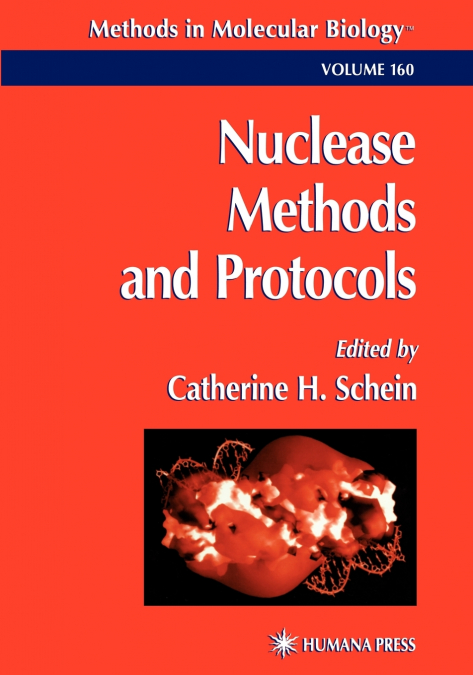
Catherine H. Schein
Nucleases, enzymes that restructure or degrade nucleic acid polymers, are vital to the control of every area of metabolism. They range from 'housekeeping' enzymes with broad substrate ranges to extremely specific tools (1). Many types of nucleases are used in lab protocols, and their commercial and clinical uses are expanding. The purpose of Nuclease Methods and Protocols is to introduce the reader to some we- characterized protein nucleases, and the methods used to determine their activity, structure, interaction with other molecules, and physiological role. Each chapter begins with a mini-review on a specific nuclease or a nuclease-related theme. Although many chapters cover several topics, they were arbitrarily divided into five parts: Part I, 'Characterizing Nuclease Activity,' includes protocols and assays to determine general (processive, distributive) or specific mechanisms. Methods to assay nuclease products, identify cloned nucleases, and determine their physiological role are also included here. Part II, 'Inhibitors and Activators of Nucleases,' summarizes assays for measuring the effects of other proteins and small molecules. Many of these inhibitors have clinical relevance. Part III, 'Relating Nuclease Structure and Function,' provides an overview of methods to determine or model the 3-D structure of nucleases and their complexes with substrates and inhibitors. A 3-D structure can greatly aid the rational design of nucleases and inhibitors for specific purposes. Part IV, 'Nucleases in the Clinic,' summarizes assays and protocols suitable for use with t- sues and for nuclease based therapeutics.